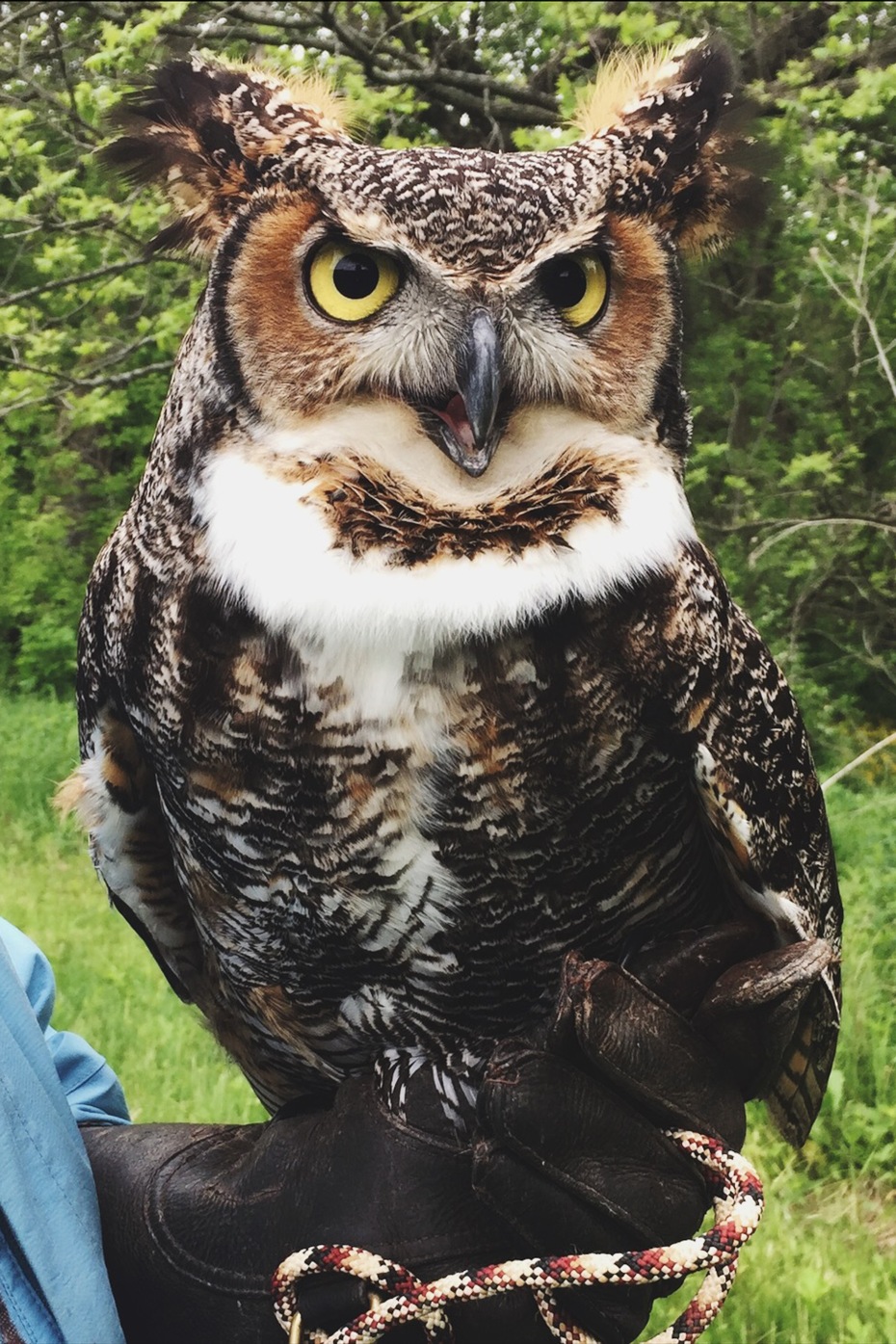
Regi Great Horned Owl
Scientific Name: Bubo virginianus
Hatch Year: 2012
Non-releasable due to: human imprint
Great Horned Owl Facts:
- Great Horned Owls are one of the most common owls in North America, found in deserts, wetlands, forests, grasslands, backyards, cities, and almost any other semi-open habitat between the Arctic and the tropics.
- Like much of the raptor world, females are larger than males – a condition known as reverse sexual dimorphism. Males, however, have a larger voice box and a deeper voice.
- When clenched, a Great Horned Owl’s strong talons require a force of 28 pounds to open.
- Great Horned Owls can take both large and small prey, including raptors such as Ospreys, Peregrine Falcons, Prairie Falcons, other owls, rodents, and frogs.
- Owls’ eyes don’t move in their sockets, but they can swivel their heads more than 180 degrees to look in any direction. Contrary to a widely-held belief, owls cannot turn their heads all the way around.
